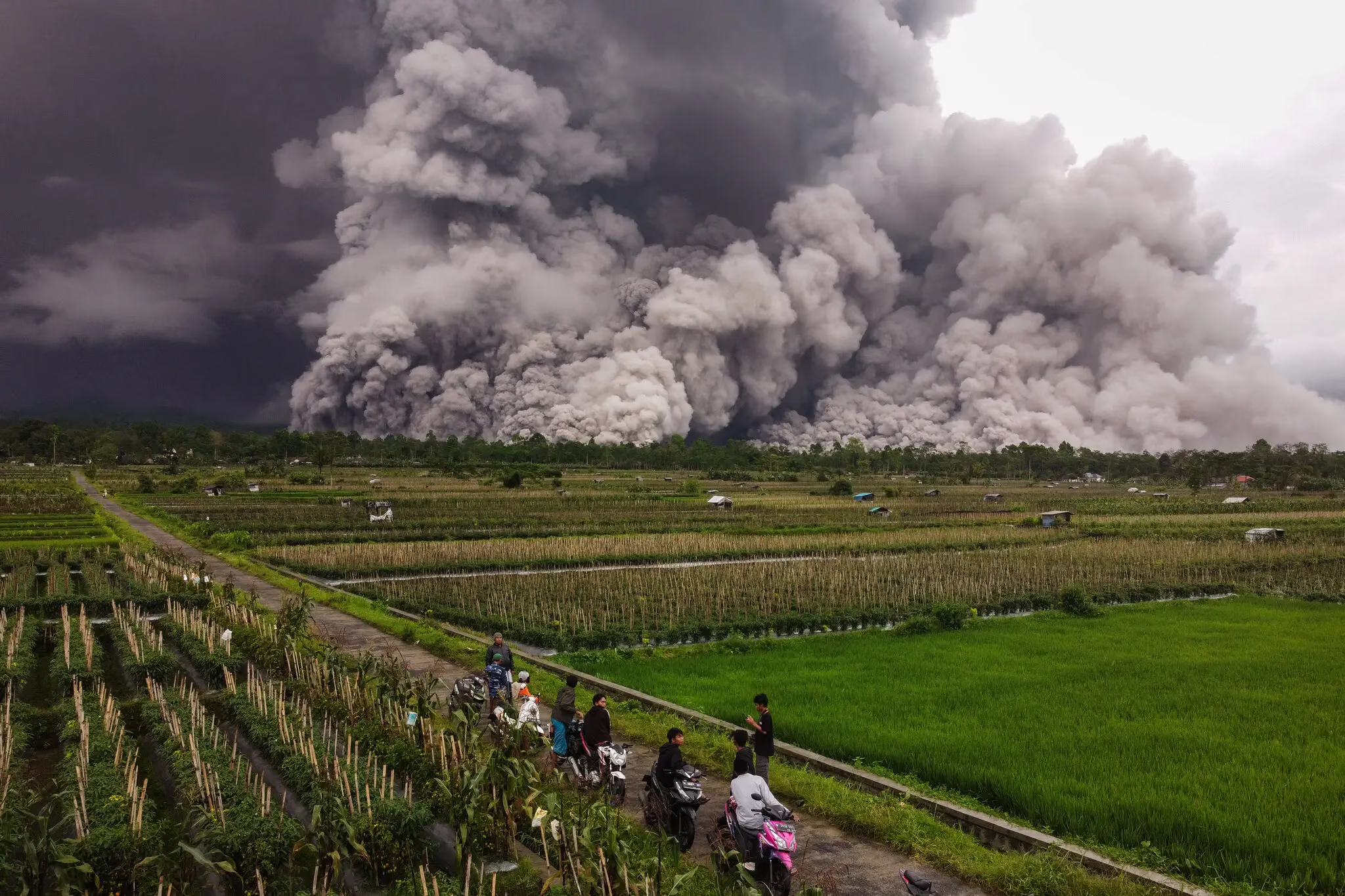Semeru, one of Indonesia’s most active volcanoes, erupted again on November 19, sending fast-moving clouds of hot ash and debris sweeping over nearby communities.
According to the national geological agency, the eruption began around 2 p.m. local time. A column of ash more than 6,500 feet high rose above the summit of Java’s tallest volcano. Footage shared on social media and by local media outlets showed dense ash clouds racing toward villages, bridges and farmland. In the settlements at the foot of the mountain, houses and roads were blanketed in a dark-gray layer of fallout. The volcano also expelled large boulders that landed at considerable distances.
Indonesia’s authorities declared the fourth and highest alert level, warning that lava and ash flows could travel up to 12 miles from Semeru, and that within a five-mile radius there is a risk of being struck by incandescent rocks hurled from the crater.

Local residents in the area affected by the overnight eruption in Supiturang village, East Java. November 20, 2025.
The National Disaster Management Agency said 300 people were evacuated from villages at the foot of the mountain.
Authorities closed the Gladak Perak Bridge, located about eight miles southeast of Semeru’s summit, after volcanic flows swept across it, leaving a layer of hot ash. According to local media, two people who were on the bridge suffered burns and were taken to a hospital on Wednesday evening.
Semeru remains one of Indonesia’s most active volcanoes: among the country’s 120 active volcanoes, it has erupted the most frequently, with 2,802 episodes recorded this year. Nur Hudha, a sand miner living 12 miles from the volcano, said his home had been spared but his family was prepared to leave immediately if conditions worsened.
